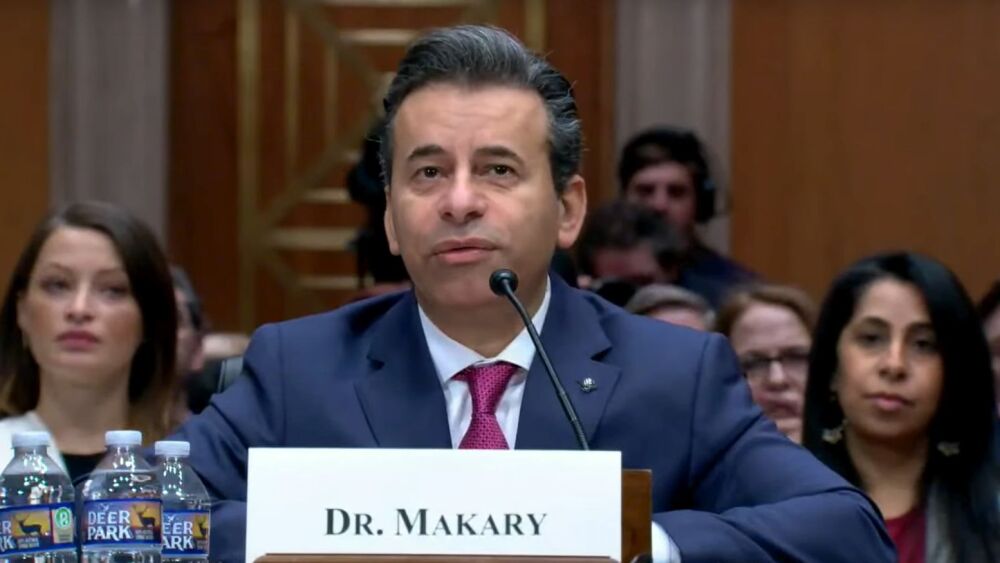Now, researchers are on the threshold of great changes that have the potential to transform non-curable diseases into those that can be cured.
Radiation therapy has been less revolutionary than evolutionary for nearly a century. Now, however, researchers are on the threshold of great changes that have the potential to transform non-curable diseases into those that can be cured.
That’s largely because of breakthroughs that combine radiation with targeted therapeutic agents, including immunotherapies, that either add to the tumor-killing benefits of radiation or create a meaningful systemic immune response. Several programs in clinical trials have recently shown promising results, including (in some cases) prolonged survival.
Nanobiotix, for one, is beginning a global Phase III trial, using NBTXR3 and radiation as a treatment for cisplatin-ineligible patients with head and neck cancer. Earlier this year, the company announced that the therapy conferred 18.1-month median overall survival and 10.6 -month median progress-free survival in 41 elderly and frail patients with head and neck squamous cell carcinomas (HNSCC) in a Phase I trial. Those patients were ineligible for cisplatin and could not tolerate cetuximab. Their overall response rate was 85.4%.
The mechanism of action for NBTXR3 is physical. “We inject the inert nanoparticles (of NBTXR3) into the tumor and administer radiotherapy. They absorb that radiation and, because they have high electron density (compared to the cells), they deliver more energy into the tumor and thus increase the tumor-killing effect,” Nanobiotix CEO Laurent Levy, Ph.D. told BioSpace. The result is akin to delivering high doses of radiation to the tumor, but without increasing the damage to surrounding healthy tissues that accompanies high levels of radiation. “That’s fundamental. Here, the damage is delivered inside the tumor cells.
“Because we have a physical mechanism of action, we eliminate biological variation (that limits biologic therapies),” Levy explained. And, he pointed out, the increased tumor-killing effect is active only while the radiation is being delivered. NBTXR3 potentially could be used to treat any type of solid tumor as long as it can be injected. Local injection limits the body’s exposure to toxicity and is shown to be very well-tolerated in several solid tumor indications.
Next, Nanobiotix plans to combine radiation with immuno-oncology, based on some of the data it presented at ASCO earlier this year. “If we prove to have a role in therapy for head and neck cancer patients and in immunotherapy, we can look more broadly to other cancers,” Levy said.
In other research, Massachusetts General Hospital is combining radiation with immune checkpoint inhibitors to enhance the immune response and thus more effectively combat cancers that generally resist that immuno-based therapy.
A Phase II trial of patients who received low-dose radiation plus nivolumab and ipilimumab reported complete, partial or stable (non-progressing) responses in 37% of the 40 colorectal cancer patients and 29% of the 25 pancreatic cancer patients in that study. “This is an impressive clinical result given that historically, these cancers respond in the low single-digit percentage range,” senior author David T. Ting, M.D., associate clinical director for innovation at the MGH Cancer Center and an associate professor of medicine at Harvard Medical School, said in a statement. The combination of low-dose radiation and immunotherapies that have different targets appears to create a tumor vaccine environment.
The tumors that responded to this treatment had higher than normal expressions of viral sequences found in the HERV-K retrovirus. That retrovirus, therefore, may serve as a biomarker to identify those tumors most likely to respond to this treatment. The results were published in Nature Cancer.
In another approach, the University of Texas MD Anderson Cancer Center is developing radiosensitizers to make tumors more susceptible to radiation, but without the high levels of toxicity associated with current sensitizers. In head and neck cancer, Professor Curtis Pickering and colleagues, writing in Nature Communications, reported that targeting CBP and p300 increased radiation sensitivity in tumors with mutations of the CRDBBP and EP300 genes. By blocking those genes’ histone acetyltransferase function, the tumors responded to radiation therapy.
Meanwhile, radiologists are striving to improve the way in which radiation is delivered.
In one study, “Comparing Toxicity and Outcomes Between Twice-Daily (BID) Versus Pulsed Low-Dose Rate (PLDR) Radiotherapy (RT) for Reirradiation of Anorectal Cancers,” researchers at Fox Chase Cancer Center determined that pulsed, low-dose radiation was more effective than standard, twice-daily radiation. With a retrospective study of 26 anorectal cancer patients, they suggested that a pulsed delivery method was safer and better tolerated. The data originally was presented as a poster at the American Society for Radiation Oncology (ASTRO) 2021 Annual Meeting before appearing in the International Journal of Radiation Oncology, Biology, Physics.
“Adaptive radiation therapy (ART), in which the radiation treatment plan is modified during the course of the treatment to adapt to daily changes in patient anatomy and tumor location,” is one example, explained Leila Tchelebi, M.D., a radiation oncologist at Northwell Health Cancer Institute at Northern Westchester Hospital in Mt. Kisco, NY.
“These daily plan modifications allow for increased target accuracy and higher dose delivery to tumors, with minimal radiation doses to surrounding healthy organs.” The increasing ability to deliver higher doses of radiation with minimal toxicity is expanding radiation’s applicability to patients with metastatic cancers, which once were managed by systemic therapy alone. As Tchelebi said, “Trials are ongoing to address which primary tumor sites benefit the most from this treatment approach and to assess if radiation can be safely delivered in patients with an increasing number of metastases.”
“As advancements in drug therapy allow cancer patients to live longer, it has become increasingly important to offer local therapies that effectively control the gross tumor burden without increasing side effects for cancer patients. Advancements in radiation treatment planning and delivery are allowing us to cure more cancer patients.”






